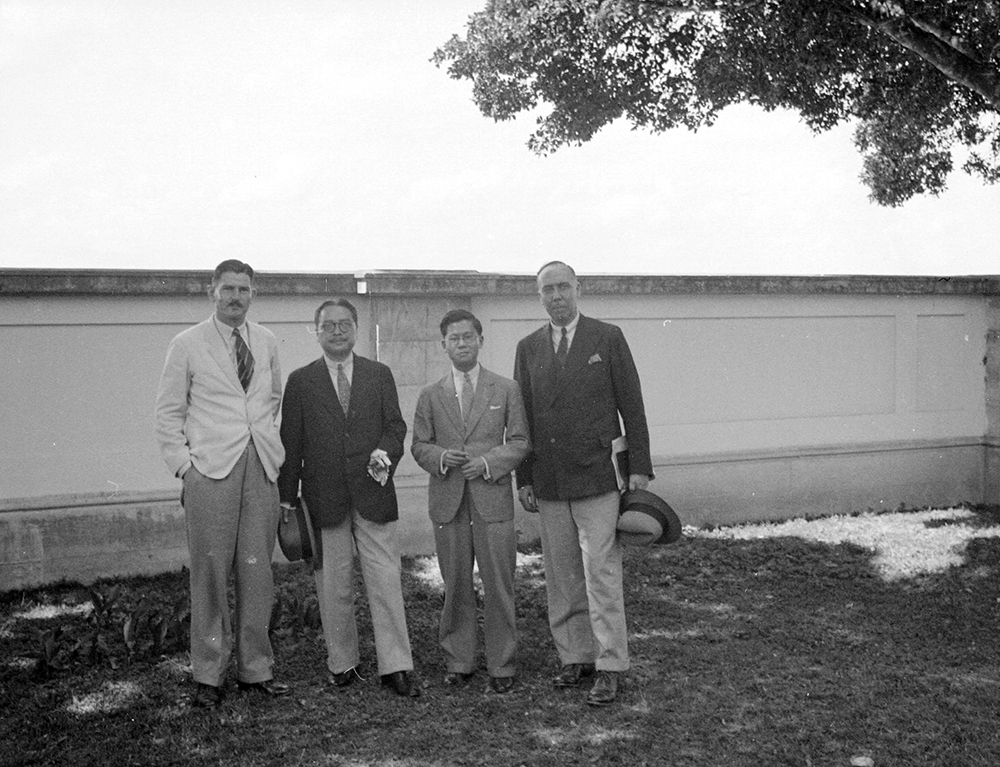We have been attempting to persuade a friend of the project, author Adam Brookes, former BBC Beijing correspondent, to pen a note to mark the paperback publication of his second novel, Spy Games. If you have not read it, you should, but make sure to start with Night Heron. Brookes is too busy penning the final volume in this trilogy, so here instead is a little introduction to our spies: or at least those we know of.

Hu Jibang (胡济邦), war correspondent and attaché to Fu Bingchang in Moscow, c.1943 – 1949, photograph by Fu Bingchang, 21 October 1945. Fu-n670 © 2007 C. H. Foo and Y. W. Foo.
Most obviously we have photographs of Hu Jibang 胡济邦 (1911-1995). Hu was a pioneering Chinese war correspondent, who spent 13 years in the USSR from 1936 onwards. She was already by then a veteran underground agent of the China Communist Party, and during her sojourn in the USSR got just about as close to the heart of the Chinese Nationalist government’s embassy in Moscow as was possible: she became the ambassador’s lover. The envoy was Fu Bingchang (subject of a recent BBC Radio 4 programme), who took a series of affectionate and intimate portraits of Hu, some of which we have placed online. Her own private photograph album was auctioned in 2013, and this included copies of some of these that had evidently been given to Hu by Fu Bingchang. If Fu was not aware of her dual role, he will have realised when she opted in 1949 to leave Europe to join the Foreign Ministry apparatus of the new communist state. In later life she served in Hungary for People’s Daily, reporting on the Hungarian revolution, and in 1972 went to New York with her husband who headed the Chinese permanent mission to the United Nations when it was established in 1972.

George Findlay Andrew and others, Swatow (Shantou), April 1934, photograph by G. Warren Swire. Sw29-175 © 2008 John Swire & Sons Ltd.
A very different agent was Briton George Findlay Andrew (1887-1971). Born in China, Findlay Andrew was a man of many careers and interests: missionary (China Inland Mission), famine relief organiser, collector of neolithic antiquities, scholar of China’s Muslim communities, head of Butterfield & Swire’s Department of Chinese Affairs, and a Special Operations Executive (SOE) agent during the Pacific War. In that last guise he was a conduit for intelligence from SOE’s Chinese partners to MI6, Britain’s Secret Intelligence Service. Here he is above in 1934, standing on the right, photographed in Swatow (Shantou), by Swire director Warren Swire on one of his regular trips to China.

Mikhail Borodin and Morris ‘Two-gun’ Cohen, Guangzhou, photograph by Fu Bingchang. Fu-n157 © 2007 C. H. Foo and Y. W. Foo.
But the most famous of our agents is Mikhail Borodin, the Comintern representative who led its mission to support the Guomindang in the period of its first alliance with the newly-established Chinese Communist Party in 1923-27. Of course, Borodin was ultimately working in plain sight, and was not averse to giving newspaper interviews. But when he first arrived in the capital of what would become the Nationalist Revolution he did so in a Soviet freighter, shipping south from Shanghai with its cargo of sheep. Here is Borodin, sometime inmate of a Glasgow jail, photographed by Fu Bingchang, with another former jailbird watching. That man is Morris ‘Two-Gun’ Cohen. Cohen, sometime gangster, gun-runner and fixer, who was born in Poland, grew up in Stepney, East London, and had migrated to Canada when he first encountered Sun Yat-sen, whose bodyguard he became. Both men would experience captivity again: Cohen in a Japanese internment camp in Hong Kong, and Borodin in Moscow’s Lefortovo prison, where he died in 1951.
So there you have it: two photographers, three photographs, four agents, several jails, and a tangle of stories.
